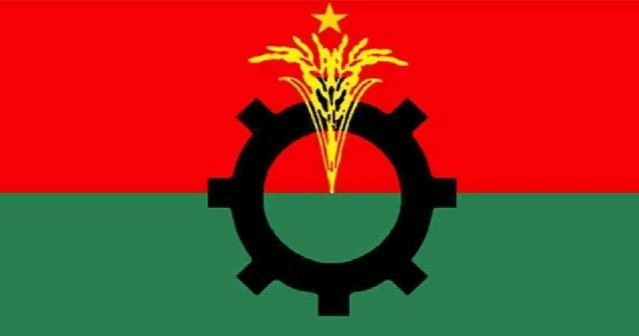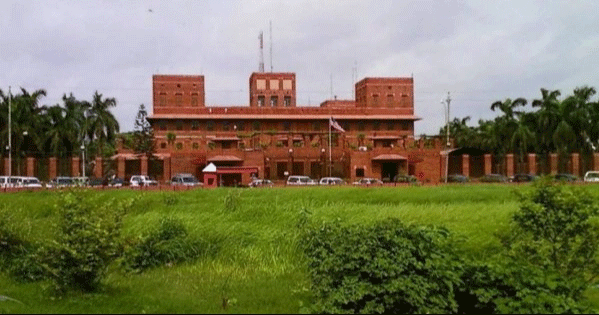Capital city lacks digital roads
Digital Bangladesh, but no digital touch
Golam Mostafa Jibon: Although, life has started to get normalcy after a long-time battle with corona pandemic, the traffic congestion of the capital city Dhaka hasnow become main barrier for the people movement on time.
The city dwellers are getting annoyed with the heavy traffic on every road. Due to lack of coordination between the service providing organizations, planning and master plan are not coming to help to reduce traffic congestion. At one time, it was said that if the flyover is constructed, the traffic congestion problem will be resolved. But in reality, no reflection of the expectation was seen. As the days go by, the frustration with traffic jams is also increasing.
Urbanists, researchers, police and concerned people said, the traffic congestion in the capital is not being resolved due to the lack of coordination betweenutility service providing organizations. Although, digital signals have been installed for traffic management, the police are manually controlling the signals with hand gestures. There is no control over sidewalk occupation and parking management. The drivers are driving without following the line-lane, standing here and there and moving the passengers. Besides, the drivers are also reckless due to the bribery trade of the responsible traffic police. Consequently, no plan is working and the chaos is not decreasing.
Dhaka Metropolitan Police Commissioner Md. Shafiqul Islam said, “We try to maintain traffic order on the road. People are chaoticto obeying traffic laws. Police are constantly trying to enforce traffic laws, but no one is obeying. People are not cooperating with theon duty traffic police on the road. The condition of the streets in this city changes rapidly. If one is in the morning, another is in the afternoon. The character of the street changes repeatedly. One road signal system does not work on other road. It is not possible to control the traffic properly by using the signal lights for a certain period of time.”
He said, “The city corporation is not interested to leave the responsibility of traffic signals. Moreover, since most of the traffic signals are useless, the traffic police have to give signals by hand gestures. We have suggested that signal lights should be installed in digital systems, but the responsibility of control should be given to the police. Various agencies work on creating traffic law enforcement trends, designing roads, and turning points. Everything has to be coordinated and action has to be taken by analyzing the character of the road.”
Bangladesh University of Engineering (BUET) Road Accident Institute Assistant Professor Kazi Shipon Newaz said,”Movement of public transport was almost shut down on the roads at the time of Corona. Now that the situation is normal, the appearance of the road is being observed as before because of we could not repair the system. There is no service way on the side of the road yet, vehicles of different speeds are running on the road and public transport has not been made up-to-date yet. It is not possible to restore order on the road without preventing accidents unless the overall system is changed. It is not possible to overcome the current situation without implementing 111 recommendations through the concerned authorities through the National Road Safety Council.”
Elias Kanchan, Chairman of ‘Nirapad Sarak Chai’ said, “The main responsibility of the government is to keep the roads safe and up-to-date. If all the relevant organizations work properly, many things can be prevented. Otherwise, such a situation will continue. However, transport owners, drivers and passengers also have a role to play. If the recommendations we have been making for a long time are not implemented, the situation will not improve. In order to find the answer to the question as to why there is so much traffic jam on the roads of Dhaka, extreme incoherence with many problems has come to light. Planned traffic system is very important to restore order on the road and reduce traffic congestion. To this end, a ‘digital signal system’ was set up on the streets of Dhaka in 2013. But it did not work. Police are manually controlling the signal with hand gestures. With the exception of some roads in Bhutan and Cambodia, there is no precedent for developing countries to control hand gestures. But, traffic control is going on in Dhaka city by hand gestures. Digital Bangladesh has become ineffective on the road. One of the reasons for the traffic jam is that the roads in Dhaka are being allowed to run without looking at the capacity, the number of vehicles that can run or the number of drivers who can drive heavy vehicles.”
The Dhaka North City Corporation (DNCC) constructed 11 U-turns in the house building area of Uttara via Tejgaon, Uttara, Banani and Mohakhali in Dhaka to reduce traffic congestion. It was said that if these are introduced, traffic congestion will come to a tolerable level. But, even then the situation did not improve much. The long road from Mirpur to Motijheel is in dilapidated condition due to Metrorail construction project to improve communication system. About half of the roads are closed to traffic. Traffic jams are also being caused due to slow moving vehicles using narrow roads. Due to this, the road from Agargaon to Motijheel is congested. At the same time, throughout the year, various development agencies of the government like Titas, WASA, BTRC, DESA, DESCO, City Corporation dig the roads unplanned. Road repairs take months. Work is going on here without coordination of one company with another.
The road is getting dilapidated. Cars are parked on the side of these roads again. In this condition,75 percent of the roads are being closed. On the other hand, leaders of city corporations and political parties in different areas are running parking business on the streets of Dhaka. The city corporation is approving parking without checking the condition of the road. Then the police have nothing to do. Traffic is congested due to parking on the side of the main road. Attempts to occupy the sidewalk and remove the shops on the street were unsuccessful despite many attempts. Roads in all areas are occupied and half of the roads are open to traffic.
In any modern city 20-25 percent of the total area is roads. As such, there are only 8 percent roads in Dhaka. Traffic jams are being created due to the fact that only one third of the roads are used for vehicles. In addition to bus stands and bus terminals, public transport operators are arbitrarily stopping and unloading passengers on roads across the city.
There are many instances of traffic on the same road in Dhaka. Buses, minibuses, trucks, mini-trucks, covered vans, private cars, CNG auto-rickshaws, rickshaws, ambulances, motorcycles, bicycles, battery-powered rickshaw, human haulers, Laguna and some horse-drawn carriages ply on different roads. There is no other capital city in the world with so many slow and high speed vehicles. Traffic jams are also being created on the roads of Dhaka due to differences in speed. Due to the traffic jam on the roads of Dhaka during peak hours, the speed of fast moving vehicles has come down to 5 kilometers per hour. At the same time, the average walking speed is 5 kilometers.
Khandaker Enayetullah, Secretary General of the Bangladesh Road Transport Owners Association said, “People in the transport sector were the biggest victims of traffic congestion in the capital. Our cars are stuck in traffic for hours. We are the ones who suffer the most. It takes several hours to reach Gulistan from Mirpur. We are incurring losses. We have been cooperating in implementing the initiatives taken by the government at different times to solve the traffic congestion problem. If there is no traffic jam on the road, our cars will be able to move more smoothly.”
President Joe Biden tests positive for COVID-19 while campaigning in Las Vegas, has ‘mild symptoms’
International Desk: President Joe Biden tested positive for COVID-19 while traveling Wedne…







